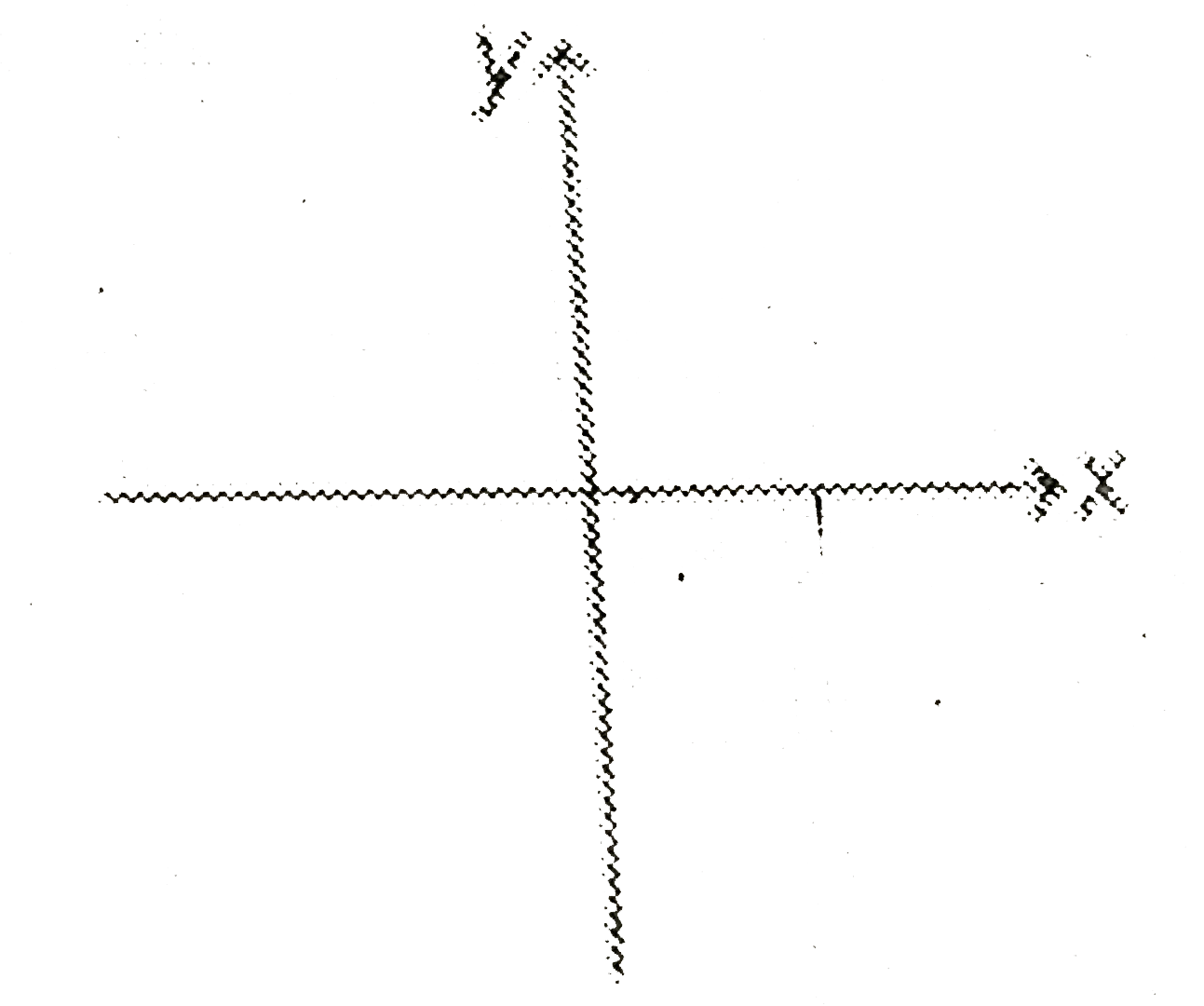Position of a particle varies as y=cos2ωt−sin2ωt. It is
harmonic but not SHM
SHM with period (πω)
SHM with period (2πω)
periodic with period (πω) but not SHM.
The correct Answer is:B
To solve the problem, we need to analyze the given function for the position of a particle, which is expressed as:
y=cos2(ωt)−sin2(ωt)
Step 1: Use Trigonometric Identity
We can simplify the expression using the trigonometric identity:
cos2A−sin2A=cos(2A)
In this case, let A=ωt. Therefore, we can rewrite the equation as:
y=cos(2ωt)
Step 2: Identify the Form of the Function
The function y=cos(2ωt) is a cosine function, which is a standard form of simple harmonic motion (SHM).
Step 3: Determine the Angular Frequency
From the expression y=cos(2ωt), we can identify the angular frequency ω0:
ω0=2ω
Step 4: Calculate the Time Period
The time period T of SHM is related to the angular frequency by the formula:
T=2πω0
Substituting the value of ω0:
T=2π2ω=πω
Conclusion
The function y=cos2(ωt)−sin2(ωt) represents simple harmonic motion (SHM) with a time period of:
T=πω
Thus, the answer is that the motion is SHM with a period of πω.
---
We can simplify the expression using the trigonometric identity:
The function y=cos(2ωt) is a cosine function, which is a standard form of simple harmonic motion (SHM).
From the expression y=cos(2ωt), we can identify the angular frequency ω0:
The time period T of SHM is related to the angular frequency by the formula:
The function y=cos2(ωt)−sin2(ωt) represents simple harmonic motion (SHM) with a time period of:
Topper's Solved these Questions
- OSCILLATIONSBOOK - NARAYNACHAPTER - OSCILLATIONSEXERCISE - EXERCISE - I (C.W)
63 Videos
- OSCILLATIONSBOOK - NARAYNACHAPTER - OSCILLATIONSEXERCISE - EXERCISE - I (H.W)
66 Videos
- OSCILLATIONSBOOK - NARAYNACHAPTER - OSCILLATIONSEXERCISE - EVALUATE YOURSELF - 4
8 Videos
- NEWTONS LAWS OF MOTIONBOOK - NARAYNACHAPTER - NEWTONS LAWS OF MOTIONEXERCISE - PASSAGE TYPE QUESTION
6 Videos
- PHYSICAL WORLDBOOK - NARAYNACHAPTER - PHYSICAL WORLDEXERCISE - C.U.Q
10 Videos
Similar Questions
The linear displacement (y) of a particle varies with time as y=(asinωt+bcosωt). State whether the particle is executing SHM or not.
View SolutionOut of the following functions representing motion of a particle which represents SHM
I. y=sinωt−cosωt
II. y=sin3ωt
III. y=5cos(3π4−3ωt)
IV. y=1+ωt+ω2t2
View Solution
Knowledge Check
The position vector of a particle is →r=acosωti+asinωtj, the velocity of the particle is
Aparallel to the position vectorBperpendicular to the position vectorCdirected towards the originDdirected away from the originThe motion of a particle is given by
y=asinωt+bsinωt
The motion of the particle isAnot a S.H.M.BS.H.M. with amplitude (a + b)CS.H.M. with amplitude (a+b)/2,DS.H.M with amplitude √a2+b2The displacement of a particle is given at time t, by:
x=Asin(−2ωt)+Bsin2ωt Then,Athe motion of the particle is SHM with an amplitude of √A2+B24Bthe motion of the particle is not SHM, but oscillatory with a time period of T=π/ωCthe motion of the particle is oscillatory with a time period of T=π/2ωDnone
The motion of a particle is given by x=Asinωt+Bosωt. The motion of the particle is
View SolutionThe position vector of a particle is r=asinωtˆi+acosωtˆj
The velocity of the particle is
View SolutionThe motion of a particle is given by x=Asinωt+Bcosωt. The motion of the particle is
View SolutionA xandy co-ordinates of a particle are x=Asin(ωt)andy=Asin(ωt+π/2). Then, the motion of the particle is

View SolutionThe SHM of a particle is given by the equation x=2sinωt+4cosωt. Its amplitude of oscillation is
View Solution